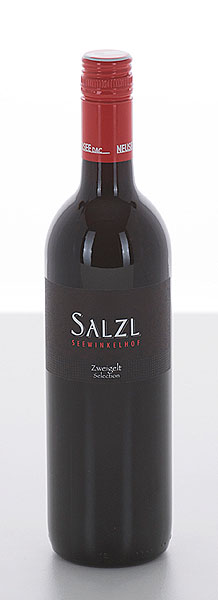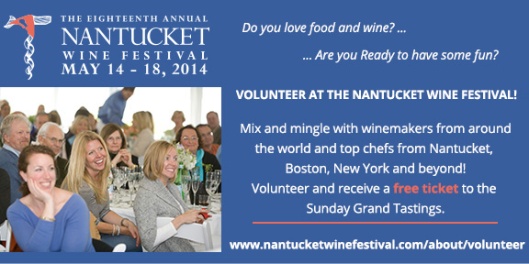Bear with me folks, before I chat about the Salzl, I thought I would brain dump on Austrian wine history, regions and laws… If you must, then scroll to the bottom for my thoughts on the 2012 Salzl…
Austria – Wine Making History
Like the wines of Germany, the wines of Austria are frequently misunderstood by the general wine drinking populace. The confusion is further compounded by the fact that in 1985 the industry was plunged into turmoil by a national scandal that overnight virtually eliminated Austria’s export wine market. The scandal involved wine brokers adding di-ethylene glycol (antifreeze) to wines to improve body and sweetness. The “silver lining” to this disaster was the establishment of new, stricter rules governing the production, bottling and exportation of Austrian wines.
Archaeological evidence suggests that grape growing was present in Traisental about 4000 years ago. Evidence of more organized grape cultivation for wine production dates to around 700BC, not unlike most of Europe. In fact, bronze wine flagons of the Celtic La Tène culture dating to the 5th century BC have been found at Dürrnberg in Salzburg. Viticulture thrived under the Romans, once Probus (Roman Emperor 276–282) had overturned the ban on growing grapes north of the Alps. Both Grüner Veltliner and Welschriesling appear to have been grown around the Danube since Roman times.
The fall of the Roman Empire hurt viticulture, but the influence of Christianity in Europe post fall saw a reemergence of strengthening viticultural activity. Wine boomed during the early 16th Century, but was sporadically interrupted during the economic turmoil and warfare of the 17th and 18th Centuries. The 19th Century saw the onset of numerous biological factors, culminating in the near total destruction of most European vineyards at the hands of the phylloxera root louse. At first deemed a catastrophe, the infestation actually became helpful by allowing wine makers to replace vineyards of lesser-quality grapes with higher-quality, more desirable varietals.
Following World War I, Austria was the third largest producer of wine in the world. Most of the production was going to Germany as bulk wine for blending purposes. The 20th Century saw the industrialization of Austrian wine, as more focus was placed on producing bulk blending wines for Eastern European consumption. This focus on quantity over quality led to the eventual downfall of the industry, when in 1985 the “antifreeze” scandal broke. The scandal effectively collapsed the export markets for all Austrian wines and forced a complete overhaul of industry standards.
The Austrian Wine Marketing Board was created in 1986 as a response to the scandal, and Austria’s membership of the European Union has prompted further revisions of her wine laws, notably the new DAC system of geographical appellations launched in 2002.
- Niederösterreich:
- Carnuntum, Donauland, Kamptal, Kremstal, Thermenregion, Traisental, Wachau, & Weinviertel
- Burgenland:
- Mittelburgenland, Neusiedlersee, Neusiedlersee-Hügelland, & Sudburgenland
- Steiermark:
- Südoststeiermark, Südsteiermark, Westststeiermark
- Wien
Austria – Wine Laws
Three Quality Hierarchies
1) National Classification
- Tafelwein – Table wine from more than one region in Austria
- Landwein – Table wine from a single region in Austria
- Qualitätswein – Fine wine from a single district within a region of Austria
Kabinett: Light wines; medium-dry; 7-10% alcohol
- Prädikatswein – Fine wine with additional notes of distinction
Spatlese: “Late Harvest”; dry-to-sweet; 9-11% alcohol
Auslese: “Select Picking”; dry-to-medium dry; 9-14% alcohol
Beerenaulese (BA): “Berries Select Picking”; rich, sweet dessert wine
Ausbruch: Sweet dessert wine made from grapes affected by noble rot.
Eiswein: “Ice Wine”; BA-level intensity; frozen grapes
Trockenbeerenauslese (TBA): “Dry Berries Select Picking”; noble rot; honey-like dessert wines
Strohwein
2) Wachau Classification (Vinea Wachau Nobilis Districtus) – Three categories, all for dry wines:
- Steinfeder (‘Stone feather’ – named after a grass, Stipa pinnata, that grows in the vineyards) – Light, quaffable wines
- Federspiel (named after a falconry device) – Similar to Kabinett wines
- Smaragd (named after an ’emerald’ lizard that lives in the vineyards) – Some of the best dry whites in Austria.
3) Controlled District of Austria (Districtus Austriae Controllatus) (DAC) – A new geographical appellation system equivalent to the French AOC or the Italian DOC. There are now 6 DACs:
- Weinviertel DAC – (for Grüner Veltliner)
- Mittelburgenland DAC – (for Blaufränkisch)
- Traisental DAC – (for both Riesling and Grüner Veltliner)
- Kremstal DAC – (for both Riesling and Grüner Veltliner)
- Kamptal DAC – (for both Riesling and Grüner Veltliner)
- Leithaberg DAC – (for Grüner Veltliner, Weißburgunder, Chardonnay, Neuburger and Blaufränkisch, beginning September 2010)
Austria – Grape Varieties
| Whites: | Reds |
| Gruner Vetliner (36% of all vineyards) | Blauer Zweigelt |
| Müller-Thurgau (Riesling cross) | Blaufränkisch |
| Welschriesling | Blauer Portugieser |
| Weissburgunder (Pinot Blanc) | Blauburgunder (Pinot Noir) |
| Chardonnay | Blauer Zweigelt |
| Grauer Burgunder |
The Salzl – My interest is always piqued when I see interesting red wines from Austria. This is especially the case when the varieties are out of the ordinary, like this Zweigelt.
Zweigelt is the eponymous creation of one Fritz Zweigelt, who, in 1922 developed the grape at the Federal Institute for Viticulture in Klosterneuburg, Austria. Zweigelt is a red grape that is a cross of St. Laurent and Blaufränkisch. It is the most widely-grown red grape variety in Austria, as well as having some presence in Canada’s vineyards on the Niagara Peninsula. Like most Austrian red grapes, the wines they yield are fruity, lightly tannic with nice crisp acidity.
Salzl is an older Austrian producer (circa 1840) located in the heart of Burgenland on a corner of Lake Neusiedl. The picturesque surroundings provide an ideal climate for grape growing, with red grapes especially benefitting from the moderating lakeside effects. The vineyards are located on an interesting mix of clay, slate and limestone soil, which imparts a strong mineral quality to the wines. Very traditional, but with a fresh, lively character, the Zweigelt is a real pleasant find. At $14.99/per bottle before the discount, the wine is a solid value.
And how many of you can say you’ve had Zweigelt before?
My tasting note:
Red berry nose with lilac and wet stone hints – very pretty. Medium-bodied with moderate acidity and moderate, well-integrated tannin – good balance. Sour cherry palate with red currant, dried herb and dried raspberry notes. Moderate length – crisp and clean with a bright finish. Drinking well now – not for aging. Bottled under Stelvin, so the freshness should be nicely preserved for a few years. Good value.
Cheers!






